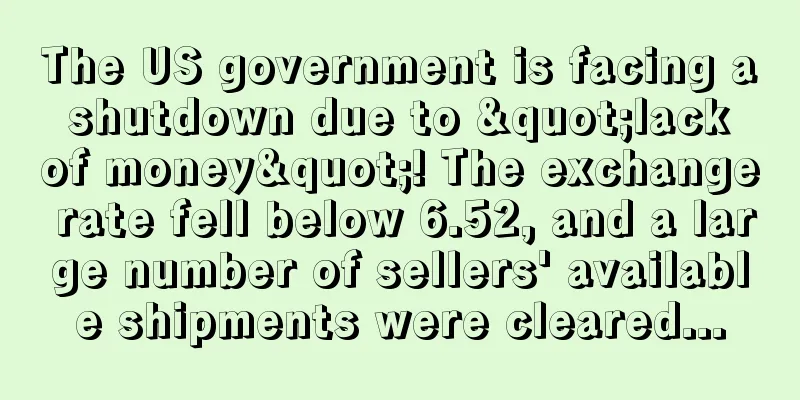|
It is learned that after the southern California was devastated by the snowstorm, New York State and New England in the United States were also hit by the strongest snowstorm of the season on February 28, local time. According to data from flight tracking website FlightAware, as of 10:40 a.m. Eastern Time on February 28, 484 flights within or in and out of the United States were canceled due to weather conditions, and 1,156 flights were delayed. Affected by this winter storm, a large area of logistics and transportation network in the United States collapsed, and Amazon warehouse deliveries also experienced large-scale delays. Amazon warehouse delivery is experiencing widespread delays At the beginning of last month, we reported in the article "Attention! These Amazon warehouses are closed! A large number of listings cannot be sold": According to feedback from multiple freight forwarders, a large number of popular Amazon warehouses are unable to operate normally and have suspended operations. To date, the above-mentioned Amazon warehouse has not resumed operations, and the goods of many sellers are still forced to be stuck in a reserved status and cannot be sold. The snowstorm that swept across the United States again has further aggravated the logistics delays. According to the emergency notice issued by many freight forwarders recently, all roads to Northern California have been closed due to the winter storm in the United States. In the next few days, the delivery of Amazon's warehouses in Northern California will be delayed to varying degrees, and the delivery time cannot be estimated. The affected warehouses mainly include: SMF1, SMF3, SMF6, SMF7, SJC7, SJC8, OAK3, OAK4, XEW2, XUSD, SCK1, SCK3, SCK4, etc. ▲ The picture comes from the freight forwarder’s revelation There is also feedback from overseas warehouses that there will be delays in recent warehousing appointments. This week, eBay US also issued an announcement that it will urgently launch protection measures for sellers affected by the winter storm to reduce the impact of logistics delays in severe weather on sellers' accounts. It can be seen that in the next few weeks, the delay in terminal delivery caused by bad weather will become the biggest obstacle for cross-border sellers to increase their orders. In addition, sellers have reported that some freight forwarders have received notices that some Amazon warehouses will be permanently closed. These Amazon warehouses may be closed permanently It is learned that recently, some sellers reported on the forum that the freight forwarder received a notification from Amazon when making an appointment for delivery: the XLX2 warehouse will be closed permanently. ▲ The picture comes from Zhiwubuyan According to the seller, XLX2 was closed by Amazon due to management problems. ▲ The picture comes from Weibo Although sellers and freight forwarders have been discussing the reasons for the warehouse closure, Amazon has not responded to the warehouse issue so far. It is learned that according to foreign media reports, Amazon has significantly reduced the scale of its entire logistics network due to slowing consumer demand and rising operating costs. According to MWPVL data, as of February 24, Amazon has canceled and closed 99 distribution facilities, including the following facilities closed in the United States: In addition, a freight forwarder recently revealed that Amazon is planning to permanently close the YYZ2 warehouse in Canada: On February 23, the YYZ2 warehouse began to stop issuing appointments, and all YYZ2 lines in all channels will be suspended from that day on. It is currently unknown when the logistics services will be improved. We would like to remind relevant sellers to always pay attention to the distribution status of the goods in the background and the operation status of the warehouse, and try to avoid transporting goods in the above-mentioned distribution facilities that have been reported to have restricted operations and are about to be closed, so as to avoid incurring losses. It can be seen from the above that as Amazon further shrinks its logistics scale, the efficiency of tail-end logistics distribution has become a major problem. The "high return rate" label that Amazon is about to implement, which was recently revealed, has made sellers feel uncomfortable. Is the “High Return Rate” label coming soon? It is learned that recently, a piece of news that "Amazon is about to label products with high return rates as 'high return rate'" has swept the cross-border circle. According to relevant news on foreign websites, the following are the three criteria for the "high return rate" label policy: 1. Amazon will calculate the average return rate of product subcategories. If the return rate of a seller's product is higher than the average return rate, it will be monitored by Amazon; 2. If the product is in the bottom 25% of the average return rate of the sub-category, the detail page will be labeled as "high return rate"; 3. In the past 12 months, only products that have completed delivery of more than 250 products will be affected by this label. Products with a low number of transactions will not be affected by this label. According to the information revealed by the seller after opening a case: Amazon customer service confirmed the news and said that the "high return rate" label will be displayed on the seller's product page, providing buyers with other additional information for them to use in evaluating their purchasing decisions.
This means that in the future, sellers with higher sales will face the risk of being labeled as having a "high return rate", which will lead to a decrease in buyers' desire to purchase and a significant drop in sales. For this reason, many cross-border sellers are angry about this news: "Oh my god, my first reaction was that I was screwed." "After applying this dog-skin plaster, won't the seller's sales be cut in half?" “If anyone wants to destroy a competitor in the future, why not just place 100 orders and then return them all at once…” However, some sellers remain skeptical about the news, believing that the new policy is too unreasonable. Amazon has not yet publicly confirmed the news. However, judging from the fact that Amazon has previously introduced several return-related measures (such as the signature confirmation function), Amazon is indeed working hard to reduce the return rate. We would also like to remind all sellers to be vigilant against malicious returns. The following measures are provided for your reference: 1. For non-wholesale products, a purchase limit can be set to avoid a large number of malicious returns; 2. Self-delivery sellers can take photos and weigh the goods before delivery to track order logistics information in real time; 3. When a malicious return occurs, the seller can submit relevant evidence to report it in the Amazon backend, or write an email to file a complaint. At present, faced with numerous challenges such as logistics distribution and return problems, cross-border sellers can only fight against the enemy with their own weapons and block the water with their own earth, keep up with the market, and analyze the data in depth, so as to find the bright road to "explosive orders".
|










